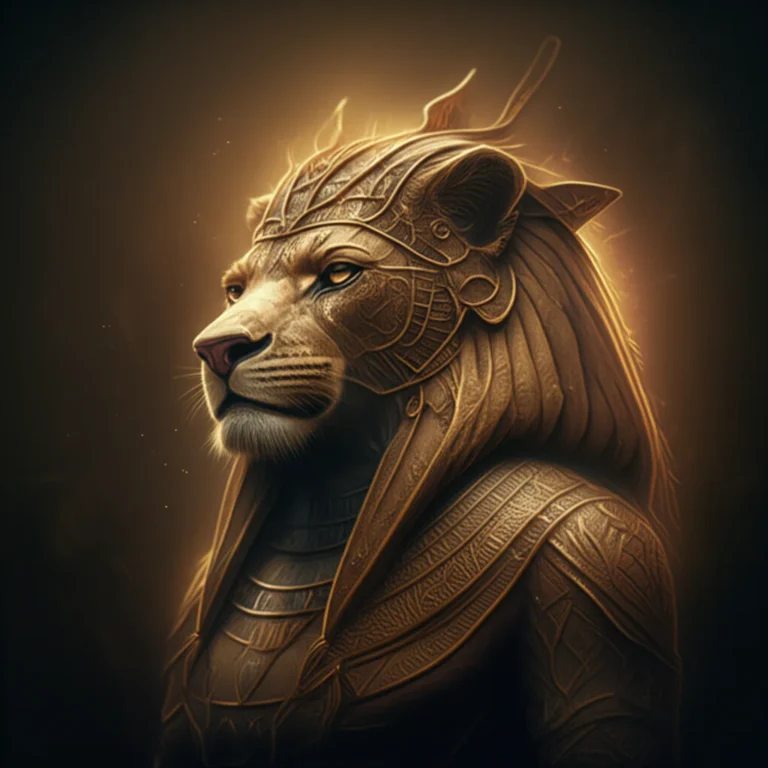Support our educational content for free when you purchase through links on our site. Learn more
Explore the Mysteries of the Nazca Lines in Peru: 10 Fascinating Facts! 🌍 [2025]
Have you ever gazed at the sky and wondered what secrets lie beneath the vast expanse of the Nazca Desert? The Nazca Lines in Peru are not just ancient geoglyphs; they are a mesmerizing puzzle that has baffled historians and archaeologists for decades. Spanning over 50 square kilometers, these massive figures, ranging from animals to geometric shapes, can only be fully appreciated from the air. Did you know that some of these lines are over 2,000 years old? 🤯
In this article, we’ll dive deep into the captivating world of the Nazca Lines, exploring their history, purpose, and the ongoing efforts to preserve these incredible artifacts. Whether you’re planning a trip to Peru or simply curious about ancient civilizations, this guide will equip you with everything you need to know about these enigmatic designs.
Key Takeaways
- Historical Significance: The Nazca Lines were created by the Nazca culture between 500 BC and 500 AD.
- Geoglyph Diversity: There are over 700 individual figures, including animals, plants, and geometric shapes.
- Viewing Options: The best way to see the lines is via airplane tours, but observation towers offer ground-level views.
- Ongoing Discoveries: New geoglyphs are still being uncovered, showcasing the site’s rich history.
- Preservation Efforts: Environmental threats and human activity pose challenges to the preservation of the lines.
For those interested in exploring more about the Nazca Lines, check out our recommended books and travel guides on Amazon.
Table of Contents
Quick Tips and Facts
Unveiling the Mysteries: A Brief History of the Nazca Lines
Where in the World? Location of the Nazca Lines
Rediscovery and Exploration: How the Nazca Lines Came to Light
Decoding the Enigma: Speculations on the Purpose of the Nazca Lines
Preservation Challenges: Environmental Concerns for the Nazca Lines
The Palpa Glyphs: Lesser-Known but Intriguing
Chinchas Glyphs: Another Layer of Mystery
Captivating Imagery: The Best Ways to View the Nazca Lines
Fun Facts and Trivia About the Nazca Lines
Notes on the Nazca Lines: What You Should Know
Conclusion
Recommended Links
FAQ
Reference Links
Quick Tips and Facts
The Nazca Lines are one of the most fascinating archaeological wonders in the world! Here are some quick tips and facts to get you started on your journey of discovery:
| Aspect | Details |
|---|---|
| Location | Nazca Desert, Southern Peru |
| Created By | Nazca and Paracas cultures (500 BC – 500 AD) |
| Total Geoglyphs | Over 700 |
| UNESCO Status | World Heritage Site since 1994 |
| Dimensions | Lines up to 1,200 feet long |
| Viewing Options | Airplane tours, observation towers, hiking |
| Environmental Threats | Erosion, pollution, and human activity |
Did you know? The Nazca Lines were first spotted from the air in the 1920s, but their true significance wasn’t understood until much later! 🌍✈️
Unveiling the Mysteries: A Brief History of the Nazca Lines

The Nazca Lines are a collection of geoglyphs etched into the arid landscape of southern Peru. Created between 500 BC and 500 AD by the Nazca and Paracas cultures, these lines cover an area of approximately 50 square kilometers. The lines were made by removing the reddish-brown surface pebbles to reveal the lighter soil beneath, creating stunning images that can only be fully appreciated from the air.
Key Historical Points:
- First Mention: The lines were first documented by Spanish chronicler Pedro Cieza de León in 1553, who described them as trail markers.
- Modern Discovery: In the 20th century, Peruvian military and civilian pilots began to notice the lines, leading to further exploration by scholars like Paul Kosok and Maria Reiche.
- UNESCO Recognition: The site was inscribed as a UNESCO World Heritage Site in 1994, highlighting its cultural significance.
For a deeper dive into ancient mysteries, check out our article on Unraveling the Mysteries of the Anunnaki and Ancient Astronauts: 13 Fascinating Insights for 2024! 🚀.
Where in the World? Location of the Nazca Lines
The Nazca Lines are located in the Nazca Desert, about 400 kilometers south of Lima, Peru. This arid coastal plain is characterized by its dry climate, making it an ideal location for the preservation of these geoglyphs.
Geographic Coordinates:
- Latitude: 14°41′51″S
- Longitude: 75°8′6″W
Accessibility:
- Air Tours: The most popular way to view the lines is through small airplane tours, offering breathtaking aerial views.
- Observation Towers: There are designated viewing platforms that allow visitors to see some of the smaller geoglyphs without flying.
Rediscovery and Exploration: How the Nazca Lines Came to Light
The rediscovery of the Nazca Lines is a tale of intrigue and adventure! Initially overlooked for centuries, they gained attention in the early 20th century when Toribio Mejía Xesspe spotted them in 1927.
Key Figures in Exploration:
- Paul Kosok: Credited with the first in-depth study of the lines in the early 1940s, he proposed that they served as astronomical markers.
- Maria Reiche: A mathematician and archaeologist, she dedicated her life to studying the lines and argued they were linked to astronomical events.
Modern Discoveries:
- Recent studies have revealed new geoglyphs, with Yamagata University and IBM Japan using AI to discover hundreds of previously unknown figures, showcasing the ongoing fascination with this ancient site.
Decoding the Enigma: Speculations on the Purpose of the Nazca Lines
The purpose of the Nazca Lines remains one of the biggest mysteries in archaeology. Scholars have proposed various theories, each more fascinating than the last!
Theories on Purpose:
- Astronomical Calendar: Some believe the lines were used to mark celestial events, such as solstices and equinoxes.
- Religious Significance: Others suggest they were part of rituals to honor deities associated with water, crucial for agriculture in the arid region.
- Fertility Symbols: Certain figures, like animals and plants, may symbolize fertility and agricultural abundance.
- Geometric Patterns: Some researchers argue that the lines served as pathways or irrigation markers.
Fun Fact: The largest figure, the Hummingbird, stretches an impressive 93 meters long! 🐦
Preservation Challenges: Environmental Concerns for the Nazca Lines
Despite their historical significance, the Nazca Lines face numerous threats that jeopardize their preservation.
Key Threats:
- Erosion: The lines are shallow, only about 10-15 cm deep, making them vulnerable to natural erosion.
- Human Activity: Illegal construction, off-road vehicles, and even tourism can damage the fragile landscape.
- Climate Change: Increased rainfall and changing weather patterns pose new risks to the preservation of the lines.
Preservation Efforts:
- The Peruvian government has enacted laws and regulations to protect the site, but enforcement remains a challenge.
The Palpa Glyphs: Lesser-Known but Intriguing
While the Nazca Lines steal the spotlight, the Palpa Glyphs are another fascinating aspect of this region. Located nearby, these geoglyphs date back even further than the Nazca Lines, attributed to the Paracas culture.
Key Features:
- Geometric Shapes: The Palpa Glyphs include intricate geometric patterns and figures, much like their Nazca counterparts.
- Cultural Significance: They offer insights into the beliefs and practices of the Paracas people, suggesting a rich cultural tapestry in the region.
Chinchas Glyphs: Another Layer of Mystery
Further north along the Peruvian coast, the Chinchas Glyphs add another layer to the mystery of ancient geoglyphs.
Characteristics:
- Diverse Designs: These glyphs feature a variety of shapes and figures, showcasing the artistic expression of the Chincha culture.
- Cultural Connections: Like the Nazca and Palpa, the Chinchas likely held religious or agricultural significance.
Captivating Imagery: The Best Ways to View the Nazca Lines
Seeing the Nazca Lines is an experience like no other! Here are the best ways to take in these ancient wonders:
Viewing Options:
- Airplane Tours: The most popular choice, offering stunning aerial views of the geoglyphs.
- Observation Towers: For those who prefer to stay on the ground, there are towers that provide views of select lines.
- Hiking Trails: Some trails allow for closer inspection of specific figures, though they may not provide the full context of the designs.
Fun Facts and Trivia About the Nazca Lines
Here are some quirky tidbits that might surprise you about the Nazca Lines:
- First Mention: The lines were first documented in 1553 but remained largely ignored until the 20th century.
- Over 70 Animal Figures: Among the geoglyphs, there are over 70 zoomorphic designs, including a monkey, a dog, and even a human figure known as “The Astronaut.”
- Environmental Adaptation: The lines were designed to withstand the harsh desert climate, as the subsoil contains high amounts of lime that hardens with moisture.
Notes on the Nazca Lines: What You Should Know
- Visiting Tips: Always respect the site and follow guidelines to minimize impact.
- Best Time to Visit: The dry season (May to September) is ideal for clear views and pleasant weather.
- Cultural Respect: Understanding the cultural significance of the lines enhances the experience.
Conclusion

The Nazca Lines are not just a collection of ancient drawings; they are a testament to the ingenuity and creativity of the Nazca and Paracas cultures. Whether you’re an archaeology enthusiast or just curious about ancient mysteries, these geoglyphs offer a captivating glimpse into the past.
For more insights into ancient cultures and their fascinating stories, check out our Folklore and Legends and Mythology Stories sections!
Recommended Links
- Nazca Lines on UNESCO
- Explore More about the Nazca Lines
- OAT Travel: Nazca Lines and Amazon Adventure
FAQ

Q: How can I see the Nazca Lines?
A: The best way to view the lines is through airplane tours, but observation towers and hiking trails are also available.
Q: Are the Nazca Lines protected?
A: Yes, they are a UNESCO World Heritage Site, and there are laws in place to protect them, though enforcement can be challenging.
Q: What is the largest figure among the Nazca Lines?
A: The largest figure is the Hummingbird, measuring 93 meters long!
Reference Links
Conclusion

The Nazca Lines are a breathtaking testament to the ingenuity and creativity of ancient cultures in Peru. These geoglyphs, etched into the arid landscape, not only showcase remarkable artistic expression but also invite us to ponder their purpose and significance. From their mysterious origins to the ongoing efforts for their preservation, the Nazca Lines continue to captivate historians, archaeologists, and travelers alike.
Summary of Positives and Negatives
Positives:
- Cultural Significance: The lines offer a unique glimpse into the beliefs and practices of the Nazca and Paracas cultures.
- Artistic Achievement: The scale and precision of the geoglyphs are unmatched, making them a UNESCO World Heritage Site.
- Ongoing Discoveries: New geoglyphs are still being discovered, keeping the intrigue alive.
Negatives:
- Environmental Threats: Erosion and human activity pose significant risks to the preservation of the lines.
- Accessibility Challenges: Viewing the lines often requires air travel, which may not be feasible for everyone.
In conclusion, if you have the opportunity to visit the Nazca Lines, we wholeheartedly recommend it! The experience is not just about seeing ancient art; it’s about connecting with a rich cultural heritage that continues to inspire awe. 🌟
Recommended Links
-
👉 Shop Books on the Nazca Lines:
-
Explore More about the Nazca Lines:
- 👉 CHECK PRICE on: OAT Travel: Nazca Lines and Amazon Adventure
FAQ

What are the Nazca Lines and where are they located?
The Nazca Lines are a series of large geoglyphs located in the Nazca Desert of southern Peru. They consist of over 700 figures, including animals, plants, and geometric shapes, which can only be fully appreciated from the air.
Who created the Nazca Lines and why?
The lines were created by the Nazca and Paracas cultures between 500 BC and 500 AD. The exact purpose remains unclear, but theories suggest they were used for religious rituals, astronomical observations, or agricultural practices.
How were the Nazca Lines made?
The Nazca Lines were made by removing the top layer of reddish-brown pebbles to expose the lighter soil beneath. This technique created a contrast that allowed the figures to stand out against the desert landscape.
What is the purpose or meaning behind the different Nazca Lines figures?
The purpose of the figures is still debated. Some theories propose they served as astronomical markers, while others suggest they were part of religious rituals or symbols of fertility. Each figure may have held different meanings for the Nazca people.
How old are the Nazca Lines, and how were they dated?
The Nazca Lines date back to between 500 BC and 500 AD. Archaeologists have used various dating methods, including stratigraphy and carbon dating of associated artifacts, to establish their age.
What are some of the most famous or significant Nazca Lines figures?
Some of the most notable figures include:
- The Hummingbird (93 meters long)
- The Monkey (93 by 58 meters)
- The Astronaut (a human figure)
- The Spider (47 meters long)
How can I visit the Nazca Lines, and what should I expect?
Visitors can take airplane tours for aerial views or visit observation towers for ground-level perspectives. Expect to see stunning geoglyphs and learn about their history and significance from knowledgeable guides.
What are some of the theories and mysteries surrounding the Nazca Lines?
Theories about the lines range from astronomical calendars to religious symbols. Some researchers even suggest they may have been used for irrigation purposes or as pathways for ceremonial processions.
What impact do tourism and conservation efforts have on the preservation of the Nazca Lines?
Tourism can both help and hinder preservation efforts. While it raises awareness and funds for conservation, increased foot traffic and pollution can damage the fragile landscape. Responsible tourism practices are essential for protecting the site.
Have any new Nazca Lines figures been discovered recently?
Yes! Recent discoveries include new geoglyphs found by a team from Yamagata University and IBM Japan, utilizing AI technology to identify previously unknown figures, showcasing the ongoing exploration of this ancient site.




